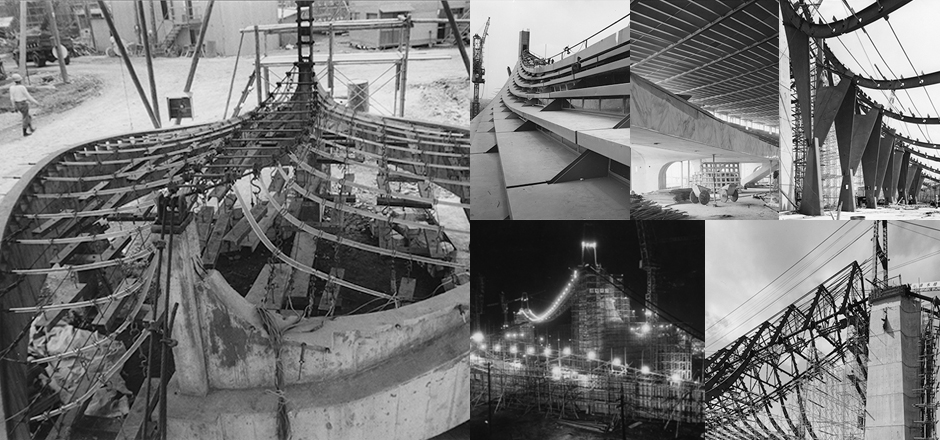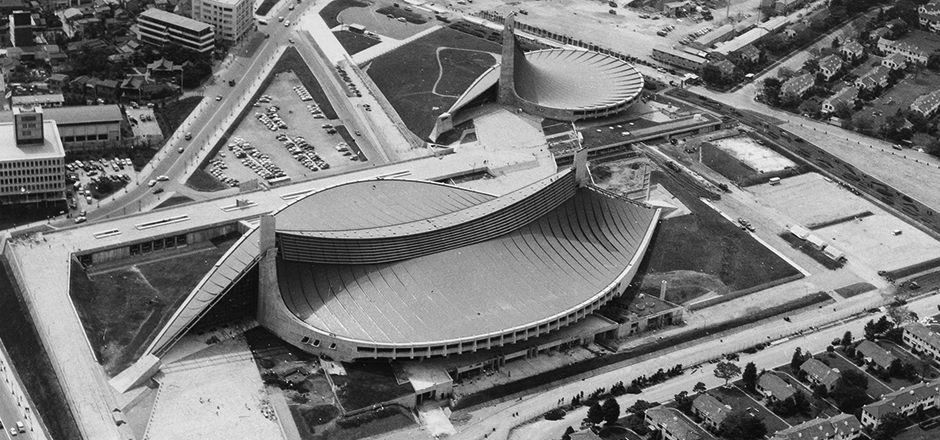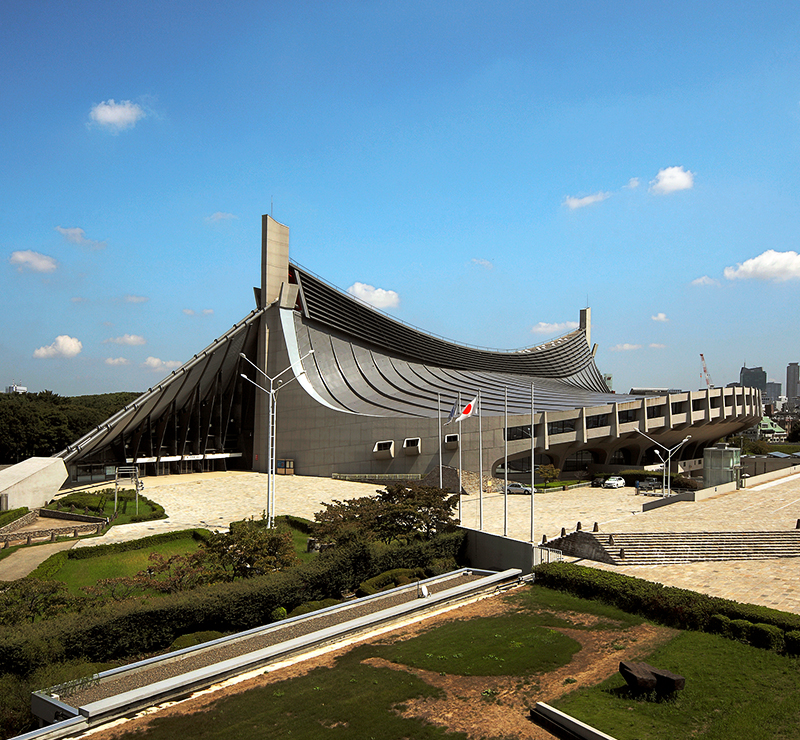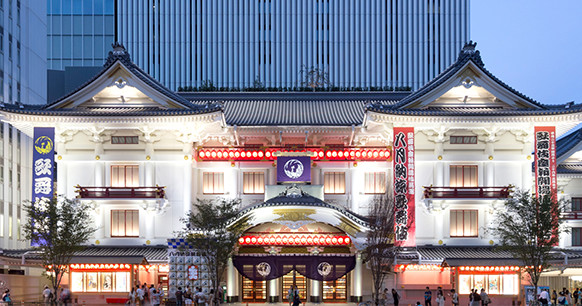
Building Lives and Protecting CommunitiesYoyogi National Stadium, a Symbol of Challenge
Exhibiting Japan’s Postwar Recovery to the World
Holding the Tokyo Olympic Games in 1964 fulfilled the long-held dream of Japan, which had climbed out of the chaos in the aftermath of World War II and was making steady headway on the path of high growth.
In addition to the requirement of artistry as a world-class structure, the venue requirement for Yoyogi National Stadium (the main indoor gymnasium of the national sports complex at the time) was that it provide an uninhibited space that could hold 15,000 spectators and bring those spectators together with competitors.
The architect, Kenzo Tange, chose a suspension roof structure in which the roof was suspended by wire ropes, a method of construction never before seen in the world. Such unprecedented technology was a challenge.

Scale of the Suspension Roof Structure
To build a vast space without even one intervening column, two main cables that were 33 centimeters in diameter and weighed 250 tons were strung between two structural support columns that were 40 meters in height and 126 meters apart. Wire ropes were stretched in a crosswise fashion down the left and right sides, suspending the massive roof. A suspension roof structure using wire ropes was designed for that unprecedented roof span.
The successful bid for the unique, unprecedented structure was chosen only 20 months before the Olympic Games.

The weight of the roof deformed it causing the project to sway.
“Our goal is to build buildings that will be there for future generations by assembling the technology, even if they are hard to build.” That is the strong conviction held by Shimizu, which undertook the construction. Shimizu had to overcome higher technological hurdles than it had conceived of, however. When the steel plates used for roofing material were placed on the suspended wires that supported the roof, the weight of the roof caused it to deform itself.
Shimizu worked with the research department of Yoshikatsu Tsuboi at The University of Tokyo on a computer-generated prediction of the deformation. We succeeded in building the historically unprecedented suspension roof by substituting steel frame for the wires stretched at right angles from the main cables of the structure that was originally planned as an all-wire construction. It was our passion for monozukuri (superb craftsmanship) that led us to generate this idea.

Wholeheartedly taking on challenges and finding solutions
The technical difficulties did not end there. A thick rope that was 4.4 centimeters in diameter was used to control the impact of the wind on the painstaking work of installing the roof panels, which each differed in shape. Construction of the stand, which had a gradual 3-dimensional curve, required careful construction while calculating the proper positioning with a model and a computer.
Work proceeded through both day and night, using new materials, equipment, and techniques through a process of trial-and-error.
Thus, the sports complex that would be the symbol of the “event of the century” was completed in 1964 on-time, within the short span of 18 months from beginning construction, a feat which had been deemed “practically impossible.” The collective intelligence of the world of architecture in Japan and the technical capabilities and passion of Shimizu were all poured into that accomplishment.

Yoyogi National StadiumA name etched in history
The world’s largest sports event finally opened in Tokyo under a clear blue sky on October 10, 1964. Intense swimming competitions unfolded over a series of days in the sports complex that was completed by identifying the problems and solving them through trial and error.
Half a century has passed since then. The Yoyogi National Stadium is still beloved by people as a venue for sports, concerts, and other events, and it still has a commanding presence after more than 50 years. To Shimizu the stadium is also an important monument to the history of challenge.

The information posted here is the current information on September 1, 2017.
Please be aware that this information may have changed by the time you view it.


